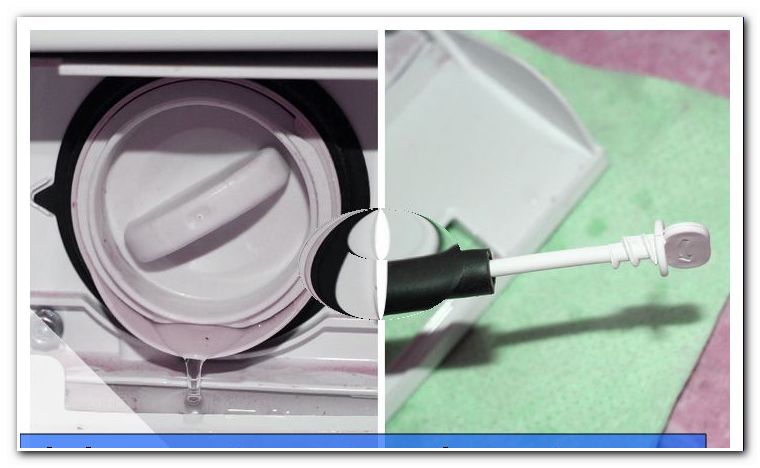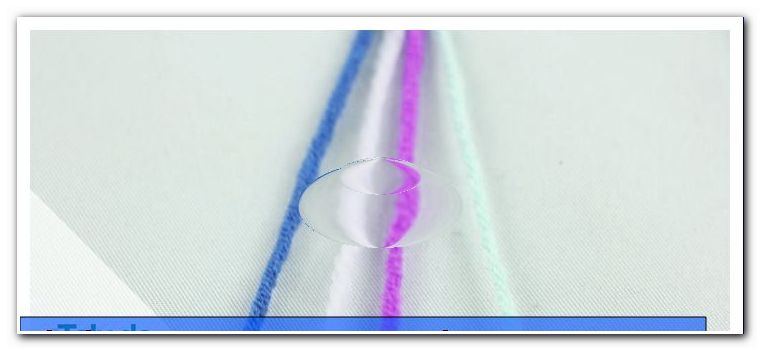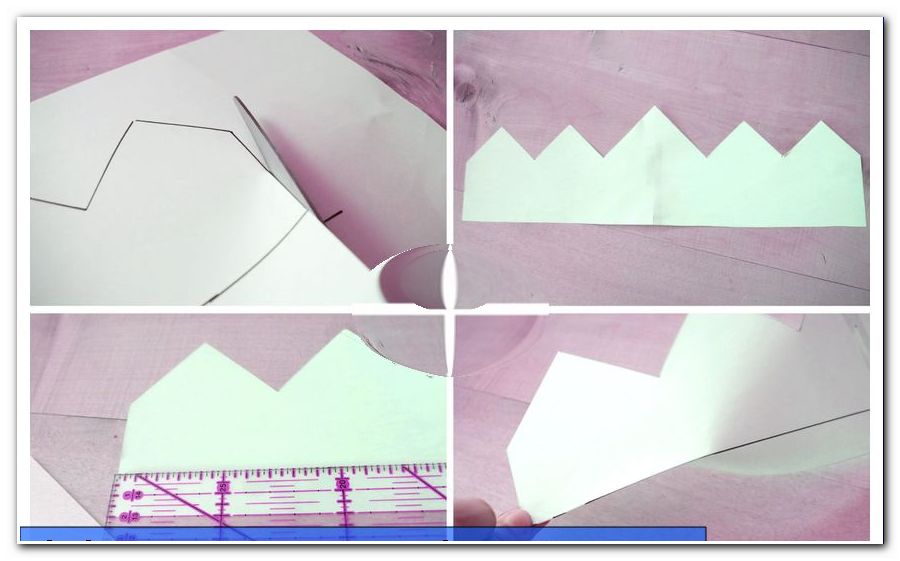Knit Patent Patterns - Instructions for Simple & Fake Patent

- Material and preparation
- Simple patent pattern
- Wrong patent sample
- Two-tone variant
The patent pattern stands out due to its characteristic ribs. It is easy to learn because it consists of only two rows, which are always repeated. In addition to the classic pattern, we show you in this guide a variant that looks almost like a patent, but is made only of right and left stitches.
You would like to knit a warm scarf for the winter, but the edges do not look good. "> Material and preparation
To practice the patterns, it is best to use a medium-strength yarn, that is, four or five. The wool should not be irregularly thick or fluffy because the stitches are less recognizable. Once you master the pattern, you can experiment with different yarns. Knit with wool in thickness ten or twelve, Patent is wonderfully suited for cuddly, warming accessories for the winter.
In this guide we assume that you already know the right and left stitches. For the wrong patent you need no further knowledge. The simple patent explains the light techniques you need to apply additionally. Diving in the description of a series of asterisks (*) means that only the part between the symbols is repeated continuously. The steps before or after the asterisks knit only at the beginning or at the end of the row.
Tip: In the patent, the knitting pieces are much smaller than plain right-knit works with the same number of stitches and rows. Be sure to make a swatch before using the samples described here for a project that will fit the measurements.
You need:
- smooth wool
- Knitting needles suitable for the yarn size

Simple patent pattern
Here we show you a variant of the patent that is particularly easy to knit. Unlike other species, the plastic effect is not created by engraved stitches. Instead, the typical ribs are formed by lifted and knitted stitches and envelopes. These three techniques are very easy to learn. For the described pattern you need a divisible by three mesh size and an additional mesh. For example, try 22 or 25 stitches to try.

Take off a stitch on the left
Slide the stitch from the left to the right needle without knitting. Lay the thread on the side of the work facing you.
Knit two stitches together on the right
With this technique you reduce the mesh count by one. Take two stitches with the right needle at the same time and knit both together like a right stitch.
envelope
An envelope creates a new stitch. Lay the thread over the right knitting needle from the front to the back, before proceeding normally.
To knit the simple patent pattern:
1st row: Unfasten 1 stitch on the left, * knit 2 stitches on the right, 1 turn-up, 1 stitch on the left, * knit 2 stitches on the right, knit 1 stitch on the right
2nd row: Unfasten 1 stitch on the left, * 1 turn-off, 1 stitch on the left, knit 2 stitches on the right, * 1 turn-off, 1 stitch on the left, knit 1 stitch on the right

Knitt the two rows described continuously.

Tip: If you want to know how many rows you already knit, count the protruding right stitches. Note that each of these stitches corresponds to two rows.

Wrong patent sample
It is a ribbed pattern that contracts like an accordion and thus resembles the real patent. Unlike the latter, the pattern described here can stretch and becomes completely flat. The advantage of the wrong patent is that it works without any special techniques. It is made only of right and left stitches. Suggest a number of stitches divisible by four and an additional stitch. For a practice punch, 21 or 25 stitches are a good value.

To knit the wrong patent design:
1st row: 2 stitches on the right, * 1 stitch on the left, 3 stitches on the right, * 1 stitch on the left, 2 stitches on the right
2nd row: 1 stitch left, * 3 stitches right, 1 stitch left *

Repeat the two rows alternately.

See the difference to the simple patent sample "> 
Two-tone variant
Knitt the simple patent as described and change color after each row. Do not cut the thread, but let it hang until you need it again. On each side of the finished knit a color dominates. In this, the ribs appear, while the second color in between occurs in the background. On the other hand, the colors are reversed. This variant works only if you work in rounds. When knitting in rows, the hanging thread of the next required color would always be at the wrong end.




